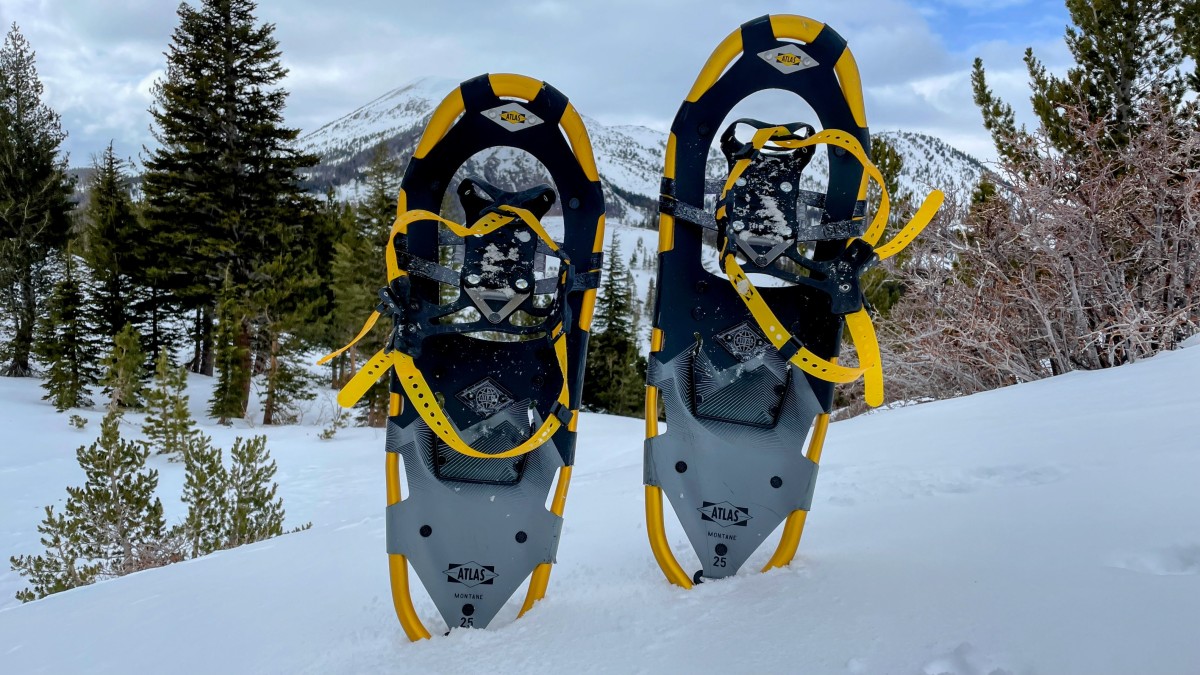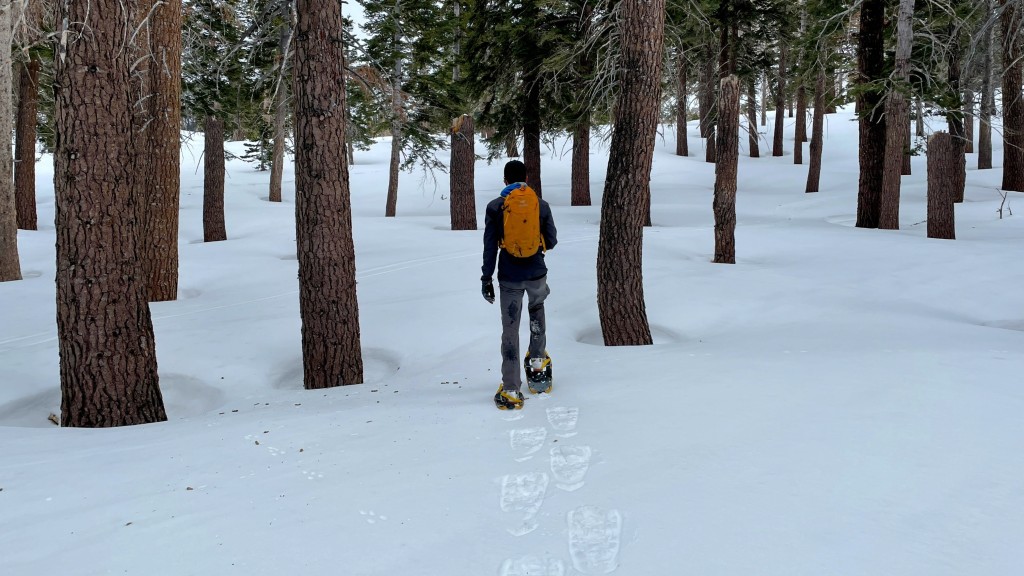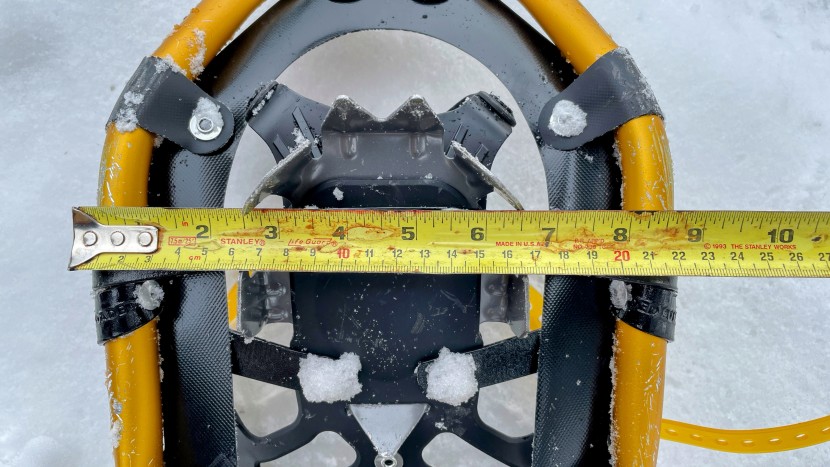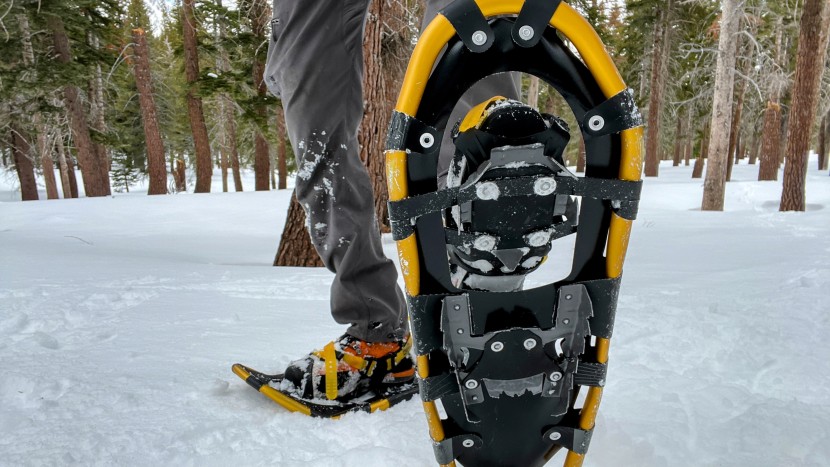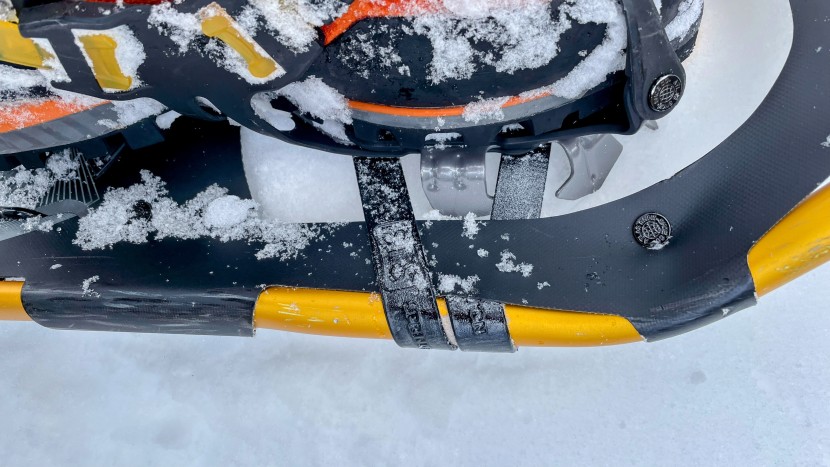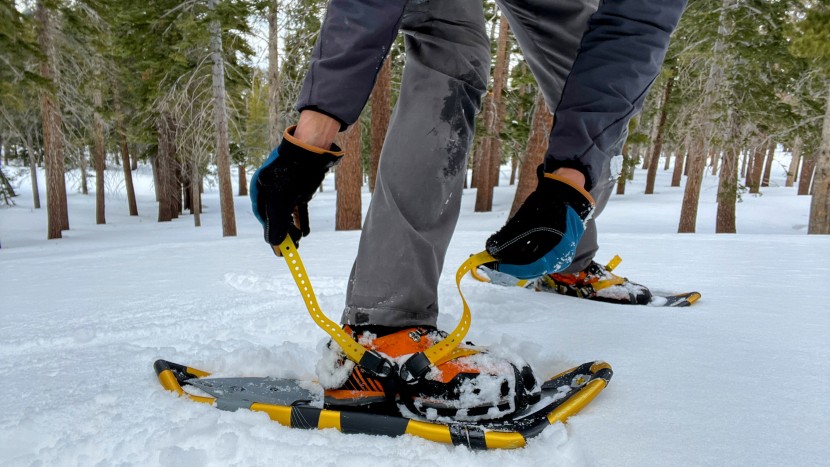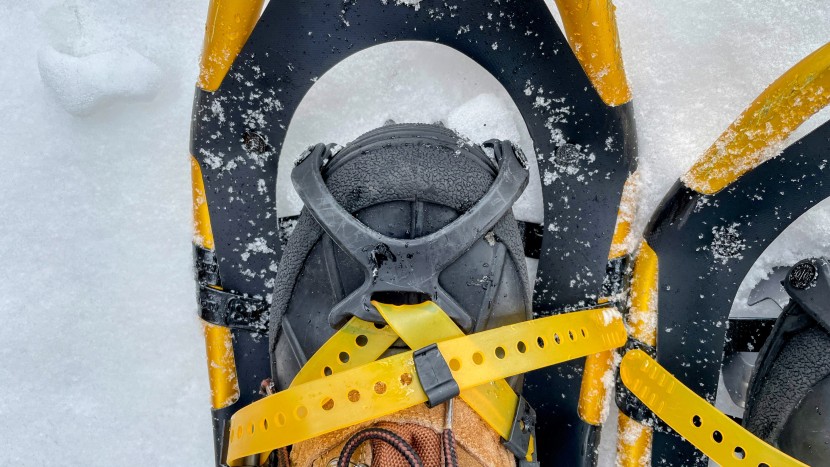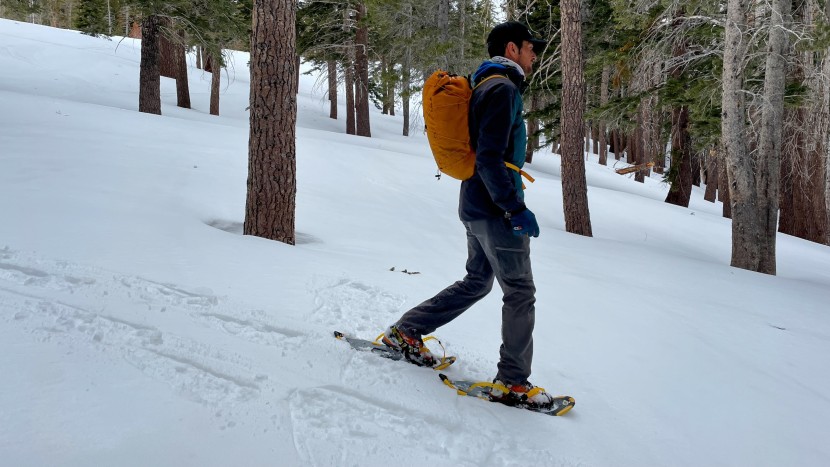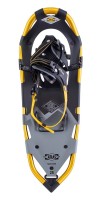
Our Verdict
Our Analysis and Test Results
The Atlas Montane is a good snowshoe, but there are a few performance differences between it and our top models. The major one is the strapped deck-to-binding attachment. While our testing team generally prefers the more rigid hinged attachment, the strapped attachment does have benefits that some users might prefer.
Flotation
We measured the 25-inch Montane at 27 inches long, providing about 218 square inches of surface area. This is a good amount of float for a snowshoe of this length and a reflection of the shape — the tapered deck bows out to 9 inches wide. Other similarly-sized models feature less surface area.
Traction
The Montane has the most traction of all the standard tubular frame snowshoes in our review. Our reviewers rarely noticed slipping or sliding while in the mountains. Prominent steel teeth under the binding are augmented with toothed steel rails under the heel.
Walkability
This is one of the key areas of difference between top performers and the Montane. With the Montane, the deck is attached to the binding with a beefy strap. This provides some cushioning on hard snow or groomed trails and can allow you to walk with a slightly more natural gait. However, as the terrain becomes more technical and challenging, we prefer a hinged attachment. The other big difference in this metric is brought about by the deck, which is wider than other snowshoes of this length. While this boosts flotation in soft snow, most of our testers found that this made them harder to walk in.
Bindings
The Montane is very easy to put on. Only two actions are required when donning this snowshoe. Pull the rubber strap tight over your forefoot, then pull the other one tight around your heel. That's it. The buckles on both straps do the rest of the work. For fast removal, pop open the levers on each buckle - this is easily done with gloves on.
The bindings on the Montane are more than secure enough for wherever you want to go snowshoeing. While the rubber strap found on other models lets hikers crank the binding down as tight as a tourniquet, we think that's usually overkill. The Montane binding, when properly tensioned, will keep this snowshoe on your foot. Thankfully, that security does not come at the expense of comfort. The rubber binding strap is woven through several wide plastic parts, which effectively distribute the load and minimize pressure points.
Should You Buy the Atlas Montane?
While this offering from Atlas does well in some ways, our testers aren't convinced that it is a lot better than some cheaper models. Folks who are thinking of the Montane should be sure that they want the strapped deck-to-binding connection and more flotation because that comes at the cost of cumbersome walking.
What Other Snowshoes Should You Consider?
Readers looking at this model might also be interested in the Crescent Moon Big Sky 32, which also offers great flotation. The Tubbs Flex VRT doesn't offer as many square inches underfoot but is a better performer in every other way, including on steep alpine terrain.
| Awards | |
|---|---|
| Price | $250 List Check Price at Backcountry |
Overall Score  |
|
| Star Rating | |
| Bottom Line | This is a great traditional snowshoe that's outshone in a few areas by newer designs |
| Pros | Good traction, easy-to-use and comfortable binding |
| Cons | Clumsy, strapped binding attachment isn't ideal |
| Rating Categories | Atlas Montane |
| Flotation (30%) | |
| Traction (30%) | |
| Walkability (20%) | |
| Bindings (20%) | |
| Specifications | Atlas Montane |
| Measured Weight (per pair) | 4.3 lbs |
| Sizes Available | 25", 30", 35" |
| Binding System | Rubber straps with plastic buckles |
| Frame Material | Aluminum |
| Measured Surface Area | 218 sq in |
| Measured Dimensions | 27"L x 9"W |
| Binding/Deck Connection | Strapped |
| Crampon/Traction Aids | Steel crampons and rails |
| Deck Material | Nytex nylon |
| Heel Lift | Yes |
| Flotation Tails Sold Separately | No |
| Men's/Women's Versions Available | Yes |
| Optimum Weight Load (per manufacturer) | 120-200 lbs (size 25") 150-250 lbs (size 30") 180-300+ lbs (size 35") |
| Tested Size | 25" |


